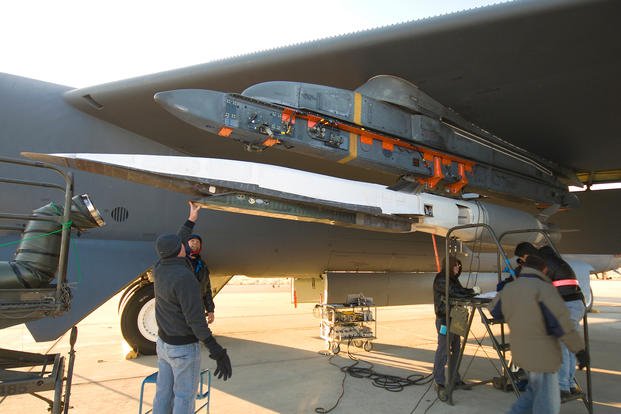The age of Russian superweapons is upon us -- at least that's what President Vladimir Putin wants us to believe.
And they are cause for concern because the United States' traditional early warning systems might not be able to see those weapons coming.
Hypersonic weapons such as Russia's 3M22 Zircon fly so fast and low -- at speeds of up to Mach 6 and at a low atmospheric-ballistic trajectory -- that they can penetrate traditional anti-missile defense systems.
The missile flies with an advanced fuel that the Russians say gives it a range of up to 1,000 kilometers. And it's so fast that the air pressure in front of the weapon forms a plasma cloud as it moves, absorbing radio waves and making it practically invisible to active radar systems.
U.S. Aegis missile interceptor systems require 8-10 seconds of reaction time to intercept incoming attacks. In those 8-10 seconds, the Russian Zircon missiles will already have traveled 20 kilometers, and the interceptor missiles do not fly fast enough to catch up.

According to Popular Mechanics, even if a U.S. ship were to detect a Zircon missile from 100 miles away, it would have only one minute to do something about it.
In order to intercept a Russian Zircon missile, the U.S. would either need to intercept it at launch or fly an object into its path.
Russia's shift to hypersonic weapons is likely a means of contending with American superiority in size, technology and sheer number of aircraft carriers. The U.S. Navy intends to maintain a force of 12 nuclear-powered aircraft carriers.
By contrast, Russia has one -- and it deploys with a tugboat in case its engine breaks down.
While at sea, any of Russia's 15 Buyan-class corvettes will be able to carry up to 25 Zircon hypersonic missiles. It would take fewer than a half-dozen of those missiles to sink even the most advanced American aircraft carrier, such as the USS Gerald R. Ford.
Some say that innovations like the Zircon are moving the development of military technology away from aircraft carrier-based systems, calling for the U.S. Navy to reconsider the role of the carrier entirely.
-- Blake Stilwell can be reached at blake.stilwell@military.com.
Want to Learn More About Military Life?
Whether you're thinking of joining the military, looking for fitness and basic training tips, or keeping up with military life and benefits, Military.com has you covered. Subscribe to Military.com to have military news, updates and resources delivered directly to your inbox.













